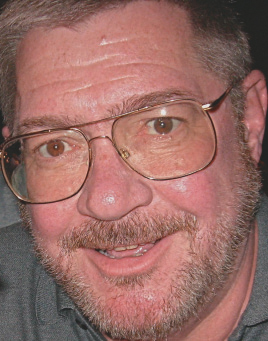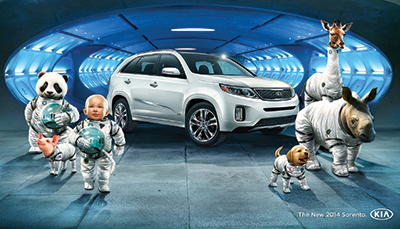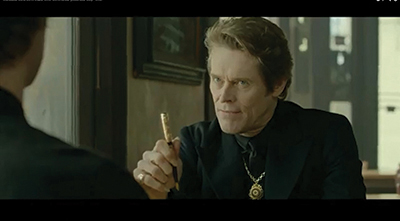Super Bowl Ads Gravitate to A Higher Level

Jay Ankeney
It was the best of times, the worst of times, and a real puzzlement. The best was for Super Bowl XLVII MVP Joe Flacco, the worst was for whoever paid the lighting bill, and the puzzlement was for what we used to call the ads; you know, those 30-, 60- or 120-second spots that back in the day encouraged viewers to go out and purchase manufacturers’ products. But this year, that didn’t seem to be the point.
How does Amy Poehler asking a sales assistant to read “50 Shades of Grey” to her in a sexy voice help Best Buy sell televisions? Do showgirls, sheiks and cowboys charging across the desert actually tell you anything about the quality of Coke? What does a horse forgiving its owner for abandoning it as a yearling say about the taste of Budweiser? And for the sake of Pop Warner, how does a ginky geek being kissed by an obviously highly paid lady model do anything to advance the brand of Dumb Daddy (or whatever the heck that sponsor is called)?
BRANDING BUZZ
So why did the 70 ads paid for by companies presumably run by grownups decide to spend an average of $3.8 million for a 30 second splash in front of 108 million viewers?
You’re looking at it.

It is hard to see what impression KIA was going after with their “Space Babies” spot if they want us to buy their cars. Product be damned. Increasingly with Super Bowl ads, it’s all about creating branding buzz before, during and after the big game. That’s why this year, for the first time, more advertisers included a Twitter hashtag (34) than a Web URL (28). And to generate that buzz, it’s the editors and post production folks behind those ads who are working the real miracles.
We’ve often discussed the primary formula for great editing: B + C = A, meaning that the juxtaposition of two (or more) disparate elements can generate a third, unique idea in the viewers’ mind.
The professional video industry's #1 source for news, trends and product and tech information. Sign up below.
But there is also the primary corollary of B2 + C2= A2, which raises the concept exponentially to recognize that nothing, not even a Super Bowl ad, happens in a vacuum. So the editor has to remember that the mindset the audience brings to the experience (B2) will be impacted by the creative presentation (C2) to generate the ultimate impression (A2) that arises out of their proximity.
Recognizing that the final “editing” in a commercial can actually be the purview of producers, writers and agencies as well as the person running an NLE’s dedicated GUI, let’s look at some of the top Super Bowl spots from the editing perspective.
INTENDED TARGET
High on most post-game lists was the “Soul” spot from Mercedes. It begins with a drab man (Brit actor Sebastian Beacon) sitting in a dingy French Quarter café. But as soon as we hear the pocketa-pocketa of bongos and a “Yow” screamed on the soundtrack, we know he is in for a devil of a time. No words reveal the gambit, but by the time we see Willem Dafoe with sharpened nails sitting across from Beacon, we know B2 has been propelled by C2 to tell the story of a man tempted by something beyond his grasp even before Mick Jagger’s voice intones “Please allow me to introduce myself…”
Beacon swirls through a fantasy filled with the likes of Kate Upton, Usher, and gaggles of girls until he realizes the new Mercedes CLA is actually within his financial grasp without needing to sign the devil’s deed. Not a word about the quality of the car, and it isn’t even for sale until September, but the spot generated great A2 buzz.

High on most post-game lists was the “Soul” spot from Mercedes. On the other hand, it is hard to see what A2 buzz KIA Sorento was going after with their “Space Babies” spot if they want us to buy their cars, but at least in the Dorito’s “Goat 4 Sale” spot someone is actually eating the product even if they have four hooves and a tail.
There was no doubt about the intended A2 that Carl’s Jr./Hardees was shooting for with their “Sun Tan” titillation featuring bikini model Nina Agdal glorying in the taste of a charbroiled Atlantic cod fish sandwich. Their A2? You can scarf down this kind of gloppy 500 calorie indulgence and still look as sleek as a naked gazelle.
But right after Beyoncé’s spectacular halftime show (and just minutes before the lights in the stadium blinked out) came the moment of the day. The words “We wait. We hope. We pray. Until you’re home again,” came on the screen signed by the name Oprah, and we heard the queen of independent TV say, “There will be a seat left open… a light left on… a favorite dinner waiting” over simple shots of people going about everyday life.
“Because in our hearts, you’ve been missed,” the VO continued as we see glimpses of soldiers getting into a not very identifiable vehicle on their way home. “Half the battle is just knowing, this is half the battle,” she says as returning veterans are greeted by emotional parents and children.
“Because when you’re home, we’re more than a family,” the soundtrack reminds us. “We are a nation… that is whole again.”
The end tag billboard shares a USO flag side-by-side with the Jeep logo before the final fadeout. That’s the only real brand name identification in the whole two-minute spot.
The agency that suggested the spot’s theme was GlobalHue. Josh & Xander from Radical Media are credited as the directors and it was edited by Chris Moore at Ringside Cutters.
At around $130,000 per second just to get the spot on the air, that’s quite an A2 .
Having spent Christmas welcoming my nephew home from Afghanistan where he had served a year as executive officer at an Army FOB (Forward Observation Base), this raised the whole Super Bowl XLVII experience to a much higher level.
